
Publisher:
Bonnie King
CONTACT:
Newsroom@Salem-news.com
Advertising:
Adsales@Salem-news.com

~Truth~
~Justice~
~Peace~
TJP
Sep-22-2006 00:32

 TweetFollow @OregonNews
TweetFollow @OregonNews
DDT Makes a Comeback to Save Millions of Lives
Bonnie King Salem-News.comA 1948 Nobel Prize winner learned that DDT could eliminate malaria, but since 1972, that’s been a crime.
 Photos courtesy: nobelpreis.org, ublib.buffalo.edu, nobelprize.org, lenntech.com, |
(SALEM) - Two deaths from E. Coli-tainted spinach have dominated the news media during the last week, while the West Nile Virus has caused an average of 111 deaths annually across the entire United States over the past seven years.
 Though tragic, those numbers don’t compare to what is happening in Uganda, a small country in central Africa with a total population about 3/4 that of the state of California.
Though tragic, those numbers don’t compare to what is happening in Uganda, a small country in central Africa with a total population about 3/4 that of the state of California.
Ugandans suffer 100,000 malaria deaths each and every year because of the lack of an effective mosquito killer. This is the equivalent of a jetliner crashing every day and killing all 275 people on board. But all that is about to change.
On Monday, September 18th, hundreds of Ugandans took to the streets of Kampala, not in protest, but in a March of Thanksgiving, to praise the World Health Organization (WHO) and the new leader of its malaria program, Dr. Arata Kochi, for publicly authorizing the use of DDT for malaria control.
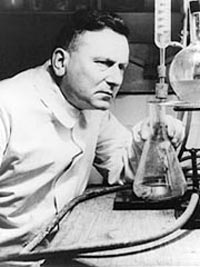 Nobel Prize Winner Paul Muller |
It was first synthesized in 1877, but it was not until 1940 that a Swiss chemist discovered that it could be sprayed on walls and would cause any insect to die within the next six months, without any apparent toxicity to humans.
The U.S. Department of Agriculture (USDA) promoted the widespread spraying of DDT because it effectively reduced the amount of pests eating crops, increasing crop yield. It’s low cost resulted in its being used to kill the mosquitoes associated with malaria, curbing outbreaks of the disease worldwide with great success.
The scientist who discovered the insecticidal properties of DDT, Dr. Paul Müller, was awarded the 1948 Nobel Prize in Physiology and Medicine.
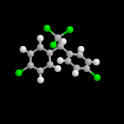 The DDT molecule |
After many years of use, and perhaps overuse, a book by Rachel Carson Silent Spring was released in 1962. The book argued that pesticides, and especially DDT, were poisoning both wildlife and the environment and also endangering human health. It is widely believed that the emotional public reaction to Silent Spring launched the modern environmental movement.
In 1969 a study found a higher incidence of leukemia and liver tumors in mice that were fed DDT compared with unexposed mice.
Next, the decline in populations of such wild bird species as the osprey and peregrine falcon, and thinning shells were thought to be the fault of contact with DDT.
Convinced that even low exposure to DDT could cause cancer in humans, newly formed environmental groups rallied for a ban.
Willamette Valley farmers and others involved in agriculture watched as several states moved to ban the pesticide, and in 1970 the U.S. Department of Agriculture announced a plan to phase out all but essential uses.
In 1971 authority over pesticides was transferred from the Department of Agriculture to the newly formed Environmental Protection Agency (EPA). In June 1972, after seven months of testimony, EPA head William Ruckelshaus—who had never attended a single day’s session in the months of EPA hearings, and who admittedly had not even read the transcript of the hearings—declared that DDT was a “potential human carcinogen” and banned it for virtually all uses.
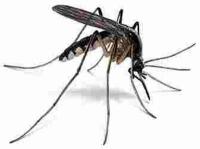 Since then, there have been many advocates of DDTs return to fight malaria, as the number of deaths clearly has risen since the ban.
Since then, there have been many advocates of DDTs return to fight malaria, as the number of deaths clearly has risen since the ban.
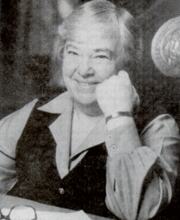 Former WA Gov. Dixy Lee Ray |
An unexpected victim, the honeybee’s population decreased when the use of DDT was discontinued, while the ban helped the increase the number of mosquitoes.
Without bees, pollination will barely occur in some cases, greatly affecting the amount of produce generated each season. Wherever pesticides are applied to plants there is a possibility of damage to honeybees.
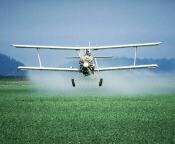 Without DDT, the other more toxic pesticides applied to crops caused serious damage to bees, wiping out entire commercial operations. Suddenly agriculture was threatening to the bees it depended on.
Without DDT, the other more toxic pesticides applied to crops caused serious damage to bees, wiping out entire commercial operations. Suddenly agriculture was threatening to the bees it depended on.
Severity increased to the point of disaster for many beekeepers in Oregon and Washington in particular, when usage of DDT was decreased and then eliminated by legislation.
In the attempt to protect the environment, a key agricultural tool was damaged as a consequence.
After decades of failure and increasing disease that led to millions of deaths, things are finally changing. According to the Congress of Racial Equality, new WHO policies under Dr. Arata Kochi are leading the way.
Since a Malaria Expert Committee meeting in 1998, the WHO position has been that, “for some time to come there will continue to be a role for DDT in combating malaria.” However, many officials still did not publicly support the chemical’s use in controlling the killer disease.
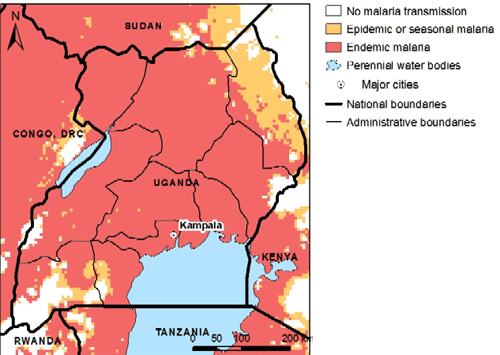 That demonstrates why last week’s decision is even more momentous. On September 15th, in Washington DC, Dr. Kochi issued revised guidelines that underscore the major role that DDT and other insecticides will again play in preventing malaria. “Indoor spraying and ACT drugs are vital to any cohesive, comprehensive, effective program,” he emphasized.
That demonstrates why last week’s decision is even more momentous. On September 15th, in Washington DC, Dr. Kochi issued revised guidelines that underscore the major role that DDT and other insecticides will again play in preventing malaria. “Indoor spraying and ACT drugs are vital to any cohesive, comprehensive, effective program,” he emphasized.
Euphoric Ugandans, many of who have lost loved ones to this dreaded disease, see this policy as an opportunity for their country to look forward to the eventual eradication of malaria.
EU President José Manuel Barroso allayed the fears of the Ugandan business community, with regard to threatened trade bans, in his response to a letter from physician and US Senator Tom Coburn. “The European Union fully supports the right and responsibility of countries to use DDT and other appropriate malaria control techniques, under Stockholm Convention and WHO guidelines,” he declared.
Carlos Odora, Africa Fighting Malaria (AFM), Kampala Fellow, emphasized that Uganda will implement indoor residual spraying with conscious responsibility and caution. He asked the consumers in Europe to trust that Uganda will ensure that no produce or products will enter Europe contaminated by DDT and to support the use of this life-saving insecticide-repellant, and all other malaria control measures.
Fiona Kobusingye, Chairperson of CORE-Uganda, said CORE-Uganda and Africa Fighting Malaria will continue to lobby and educate the EU and European consumers, to ensure that products are not banned, and its business and economic interests are not harmed, because the country seeks to protect the lives of its children.
So what about the charges against DDT?

A 1978 National Cancer Institute report concluded after two years of testing on several different strains of cancer-prone mice and rats that DDT was not carcino-genic.
As for the DDT-caused eggshell thinning, it is unclear whether it did occur and, if it did, whether the thinning was caused by DDT at all. After reassessing their findings using more modern methodology, Drs. Hickey and Anderson found that the egg extracts they had studied years before contained little or no DDT and said they were now pursuing PCBs, chemicals used as capacitor insulators, as the culprit.
The conflict and the questions continue in the U.S., but in Uganda it is a time of relief and celebration.
From now on, they will not fear that daily jetliner crash.
Articles for September 21, 2006 | Articles for September 22, 2006 | Articles for September 23, 2006

Quick Links
DINING
Willamette UniversityGoudy Commons Cafe
Dine on the Queen
Willamette Queen Sternwheeler
MUST SEE SALEM
Oregon Capitol ToursCapitol History Gateway
Willamette River Ride
Willamette Queen Sternwheeler
Historic Home Tours:
Deepwood Museum
The Bush House
Gaiety Hollow Garden
AUCTIONS - APPRAISALS
Auction Masters & AppraisalsCONSTRUCTION SERVICES
Roofing and ContractingSheridan, Ore.
ONLINE SHOPPING
Special Occasion DressesAdvertise with Salem-News
Contact:AdSales@Salem-News.com

Salem-News.com:
googlec507860f6901db00.html

Terms of Service | Privacy Policy
All comments and messages are approved by people and self promotional links or unacceptable comments are denied.
Ray Carson March 2, 2007 11:10 am (Pacific time)
When discussing science,ones political convictions often overshadow and decay ones credibility. It is a well know fact that more people die each year as a result of exposure to DiHydrogen Oxide...we should really ban that stuff :) http://potency.berkeley.edu/text/Paustenbach.pdf http://media.hoover.org/documents/0817939326_91.pdf
Jerry Shaw February 27, 2007 7:14 am (Pacific time)
The DDT debate and criticism , as do other issues, has some merit. What the U.N. did to cut off DDT to 3rd world countries was not done well. To Dixie Lee Ray's credit, she argued for a revision in DDT policy. But spraying huts with small amounts of DDT to repel malaria-carrying mosquitoes requires (as with AIDS education) a large well-organized infrastructure and a lot of education of an unreceptive populace. Not only that, it does not work well with certain kinds of structures. What was NOT wrongheaded is the prohibition of the agricultural use (mega-tons of the stuff) for crop insect control. None of the conservative commentary on DDT mentions this, including Ray. This stuff in the water supply can have devastating effects, because it doesn't go away quickly (it's bioaccumulative). If it were your kids at risk, I ask if you wouldn't error on the side of caution. I believe its called the precautionary principle of environmental science. Rachel Carson's book, "Silent Spring," is often a target of conservative wrath, but that criticism, too, does not address the issue of how much of the stuff (DDT and DDE, its metabolite) is in our environment that can also affect humans through its endocrine disrupting properties, just like dioxin and PCBs. See DDT as an Endocrine Disruptor in Human and Nonhuman Test Cases (PDF)
Albert Marnell September 23, 2006 2:50 pm (Pacific time)
Dear Bonnie, I am impressed with the fact that you know that what you see is not always what you get and that statistics can easily be manipulated by private agendas or just plain bad research. We hope for the best but being from a business and financial backround, I know that anyone can be sold a bill of goods and everyone has their price except Mother Theresa and she is in the stars and a few peoples hearts. (As for sleep, I try but it isn't always easy......long story).
Bonnie King September 23, 2006 11:30 am (Pacific time)
Right you are Albert, there is enough research to fill a room. Much of it was acquired, as is most, with a bias which is as perplexing in this case as in other matters of profound importance. All of us who have done surveys or other research know how things can lean one way or the other based on the targeted results. Sadly, pesticide research is no different. And we all know that the more the GP is told something, the more we all believe and except it as truth... I think the "experts" say it's nine times. I will be doing a follow up story in the next week with more comment from both sides. You'll be seeing more specific factual data that readers can verify themselves presented in the next article. I'm interested in questions and comments, and will apply what I can, so feel free to contact me. This is, was, and will be an emotional subject, but that does not detract from the importance of "getting it right". The trade off, if there is one, has to be worth it, and that's always subjective. BTW, I love that Joni Mitchell song too, but getting rid of DDT did not save the bees... so either she had a bad source, or she just wanted to rhyme! Stay tuned! (And Albert, don't YOU ever sleep?)
Albert Marnell September 23, 2006 5:52 am (Pacific time)
OH BONNIE, WAKE-UP, you slept enough today, you don't need more than one hour a night. I have a question. In Joni Mitchell's song "Big Yellow Taxi" she writes, Hey farmer, farmer put away that DDT now, give spots on my apples but leave me the birds and the bees, please. Don't it always seem to go that you don't know what you've got till it's gone. They paved paradise and put up a parking lot." I remember how much coverage was given to DDT in the sixties and seventies. Can it really be ok? Alot of research was done now that I think of it. What happened to all of that research? It must be somewhere and have some validity. They do not just get rid of products like asbestos for no reason. It was a big deal as I recall.
The Editor September 22, 2006 10:53 pm (Pacific time)
Up at the top of the story page, there is a printer icon right next to the date. If you click on that it should give you the print view and you will be able to print it without any ads. This story will probably be a couple of pages long.
Rita Swyers September 22, 2006 10:17 pm (Pacific time)
How wonderful to have this story told. How can I get a full cc. I copied it but it cut off the right side. Sorry. I am a dummy. ritas@gorge.net
Terry L. Witt September 22, 2006 6:27 pm (Pacific time)
BRAVO...well done story that needed to be told.
Curmudgeon September 22, 2006 5:31 am (Pacific time)
The banning of DDT was based on junk science and outright lies. As a result, millions of people died needlessly, and tens or hundreds of millions were sickened by malaria. I am pleased the Salem-News.com is reporting objective fact rather than hyperbole. It sets you apart from the mainstream media.
Albert Marnell September 22, 2006 3:36 am (Pacific time)
Great perspective Bonnie! I do not have a problem with a one shot deal of usage of a chemical like DDT in an emergency. It is better than dying, but are there really no other alternatives? Anyway, as long as they do not use it here or sell it to country's where it is returned to us on our imported food products, in certain situations it might be ok. Studies always raise my eyebrows because I always want to know who really funded the study and what was their agenda.
[Return to Top]©2025 Salem-News.com. All opinions expressed in this article are those of the author and do not necessarily reflect those of Salem-News.com.